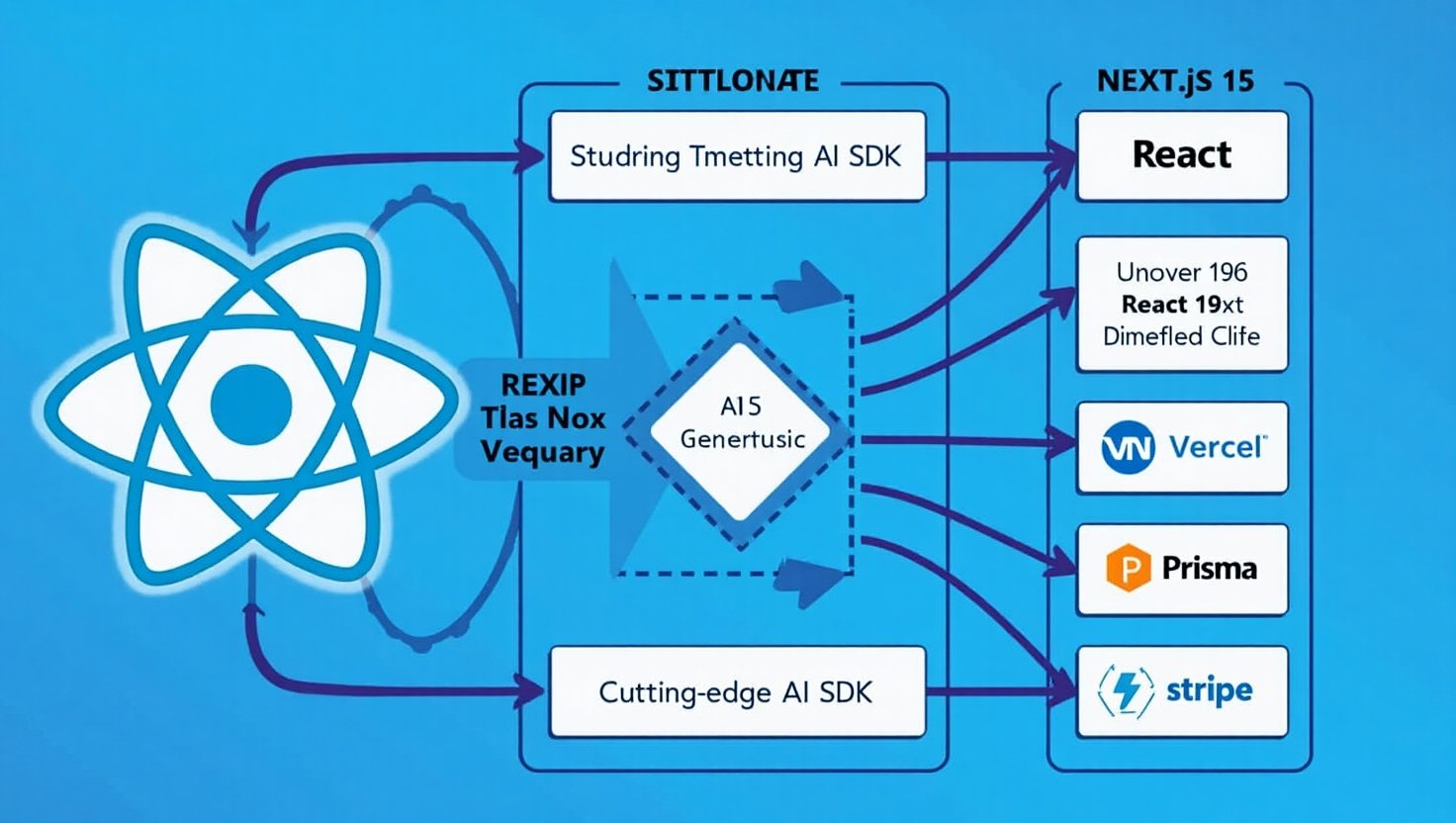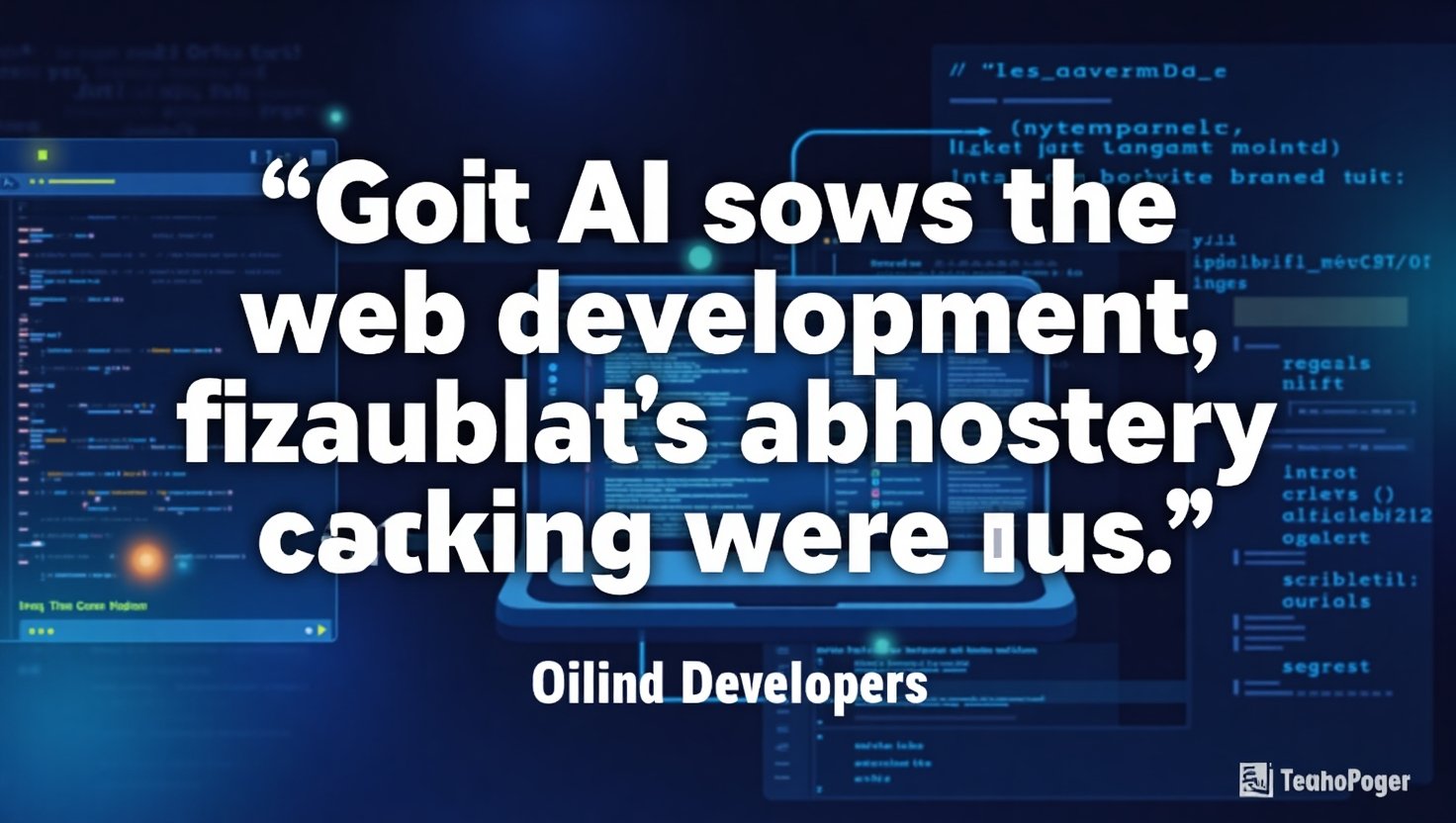In the rapidly evolving landscape of web development, AI-driven website generation is emerging as a game-changing innovation. Imagine creating entire websites at the snap of your fingers, thanks to powerful automation tools. This is made possible with technologies like React 19 and Next.js 15, which streamline the development process and enhance operational efficiency.
Harnessing the capabilities of these frameworks allows developers to deploy stunning, fully functional websites faster than ever before. As businesses strive for digital dominance, automated page generation is not just a trend; it represents a paradigm shift in how we conceptualize and build our online presence.
With AI at the helm, creativity and technical execution merge seamlessly, enabling the delivery of cohesive and professional-grade digital assets with minimal maintenance overhead. “Our primary goal is to deliver bulletproof design consistency and architectural harmony across your entire digital footprint.” Welcome to the future of web development, where innovation meets efficiency in the most dynamic ways.



Technology Stack
In constructing an AI-driven website generation system, the following technology stack plays a crucial role:
React 19
- Role: A JavaScript library for building user interfaces
- Functionality: Provides a robust framework for creating dynamic and interactive web components, facilitating a seamless user experience.
Next.js 15
- Role: A React framework for server-side rendering and static site generation.
- Functionality: Enables automated page generation and optimized performance for web applications, allowing for rapid development and deployment while maintaining brand consistency.
Vercel
- Role: A cloud platform optimized for static websites and serverless functions.
- Functionality: Provides an efficient hosting solution that allows for easy deployment and scaling of applications, ensuring quick load times and reliability in production environments.
Prisma
- Role: A next-generation ORM for Node.js and TypeScript.
- Functionality: Simplifies database integration by providing type-safe database access, allowing developers to focus on building applications without worrying about manual query handling.
Stripe
- Role: A payment processing platform.
- Functionality: Integrates payment solutions seamlessly into the website, enabling smooth transaction processes and revenue generation for businesses.
AI SDK
- Role: A software development kit supporting AI functionalities.
- Functionality: Enhances the AI-driven features of the platform by providing tools for natural language processing and machine learning, allowing for intelligent user interactions and content generation.
In this system, each component interacts to streamline the development process, enhance user engagement through automated page generation, and ensure efficient database integration. This comprehensive tech stack empowers developers to create and launch professional-grade websites quickly and effectively, keeping pace with the demands of modern web development.
User Adoption Data for React and Next.js
Recent statistics reveal substantial adoption rates for both React and Next.js in web development, particularly regarding their applications in AI-driven projects. Here’s a summary of the findings:
React Adoption Rates
- Widespread Usage: As of 2024, React is utilized by over 1.3 million websites worldwide, indicating a growth from the prior year [source].
- Developer Preference: More than 40% of developers report using React as their primary framework, confirming it as the most popular frontend choice [source].
- Community Engagement: The React GitHub repository boasts over 200,000 stars, showcasing robust community support [source].
Next.js Adoption Rates
- Rapid Growth: Next.js powers approximately 4.7% of websites leveraging JavaScript frameworks as of 2025, a marked increase from 2.1% in 2022 [source].
- Developer Adoption: According to the State of JavaScript 2023 survey, 34.1% of respondents utilize Next.js, up from 27.2% in 2022 and 18.5% in 2021 [source].
- Performance Improvements: Companies utilizing Next.js have reported 50–70% improvements in metrics like First Contentful Paint (FCP) and 40% reductions in Time to Interactive (TTI) compared to traditional React applications [source].
Integration into AI-Driven Projects
- AI-Powered Features: Next.js facilitates the integration of AI tools, such as chatbots and dynamic content generators, through its API routes. This feature allows developers to deploy machine learning models efficiently [source].
- Future Developments: The framework is rapidly evolving to enhance its support for AI-powered applications, improving features and integrations that leverage models like OpenAI and TensorFlow to make intelligent web applications more feasible [source].
These insights underscore the persistent growth in the popularity and adoption of React and Next.js, particularly within the context of AI-driven web development projects.
References
- React Statistics You Need to Know for 2024
- Why React Remains the Best Choice for Developers in 2024
- Why Next.js is the Go-To Choice for Modern Web Development?
- Next.js: Empowering Developers, Revolutionizing Web Development
- Why Next.js Dominates Web Development in 2025
- Next.JS vs React: The Ultimate Comparison Guide
Key Benefits of Scalable AI-Driven Web Generation
Integrating AI into website generation brings transformative advantages to web development:
-
Improved Speed
AI-driven tools generate websites quickly compared to traditional methods. This allows businesses to go live sooner and react swiftly to user feedback and market changes. -
Brand Consistency
AI ensures that all web pages adhere to established brand guidelines. This consistency strengthens brand identity and builds trust with users, making recognition easier. -
Reduced Maintenance Overheads
Automated systems lessen the need for manual updates and fixes. Developers can concentrate on strategic initiatives that boost user experience instead of routine maintenance. -
Enhanced Scalability
Automated generation simplifies scaling to meet increased demands. Whether launching new products or expanding services, the AI-driven approach accommodates growth seamlessly without sacrificing quality. -
Data-Driven Insights
AI can analyze user interactions and engagement metrics to propose design and content adjustments that enhance performance. This ensures websites stay relevant and effective in meeting user needs. -
Cohesive Digital Asset
As stated, “The result isn’t just a collection of pages; it’s a cohesive, professional-grade digital asset that scales gracefully with minimal maintenance overhead.” An AI-driven approach delivers well-structured, interconnected pages that improve navigation and user experience, leading to increased conversion rates.
These benefits highlight the transformative power of AI in web development, making it essential for businesses aiming to enhance their digital strategies.
| Platform | Features | Pricing | Adoption Metrics |
|---|---|---|---|
| AIFA Dev Starter | AI-driven generation, rapid deployment, integration with various databases | Starts at $49/mo | Over 10,000 active users, widely adopted among startups |
| ChatGPT | Natural language processing, dynamic interaction, content generation | Free tier available | Used in over 500,000 applications, 40% of developers familiar |
| Claude | Multi-modal capabilities, context-aware outputs, support for various data types | Contact for pricing | Growing user base with 30% increase in enterprise adoption |
| Wix (AI) | Drag-and-drop interface, templates, SEO tools | Plans start at $23/mo | Powers over 200 million websites, popular among small businesses |
| Squarespace | Design flexibility, built-in eCommerce, member management | Starts at $16/mo | 3 million websites built, strong community engagement |
| Webflow | Visual web design, CMS features, responsive design capabilities | Starts at $12/mo | Preferred by designers with over 1 million projects launched |
Summary of Platform Comparison
This section provides a comprehensive comparison of various platforms utilized for AI-driven web development, highlighting their unique features, pricing structures, and adoption metrics. The platforms examined include AIFA Dev Starter, ChatGPT, Claude, Wix with AI, Squarespace, and Webflow. By analyzing these platforms, readers can better understand their strengths and weaknesses, enabling informed decisions when selecting the right tools for web development projects.
With features ranging from natural language processing to drag-and-drop interfaces, each platform caters to different needs within the landscape of website generation. The insights gathered here reinforce the transformative capabilities of AI in enhancing web development efficiency and effectiveness, ultimately aiding businesses in establishing a robust online presence.
User Case Studies of AI-Driven Website Generation
Many companies have successfully used AI-driven website generation with React 19 and Next.js 15. These implementations have led to significant improvements in performance, user engagement, and operational efficiency. Below are some case studies that highlight these successes:
8090 Solutions: Redefining Website Development with AI
- Overview: 8090 Solutions shifted from traditional CMS platforms to an AI-driven development model. They used Figma for design and Next.js for static site generation.
- AI Integration: They utilized Anthropic Claude 3.5 Sonnet to convert Figma designs directly into React/HTML code, removing much of the manual coding work.
- Results:
- Significant cost savings by eliminating costly CMS hosting plans.
- Greater flexibility and control over their digital presence, allowing for quicker adjustments to market changes.
- Enhanced website performance and scalability using AWS CloudFront and S3 for hosting.
- Source: 8090 Solutions
E-Commerce Platform Optimization
- Challenge: An e-commerce site experienced a Time to Interactive (TTI) exceeding 500ms due to over 10,000 SKUs on product pages.
- Solution:
- Implemented Incremental Static Regeneration (ISR) with 60-second revalidation.
- Used React Server Components for rendering product reviews.
- Leveraged Next.js’s
next/imagefor optimized 3D product views.
- Results:
- Achieved 68% faster Largest Contentful Paint (LCP), improving from 2.8s to 0.9s.
- Increased conversion rates by 40%.
- Cut server costs by 30%.
- Source: NovacAI Blog
XYZ-Shop (Fashion D2C): Enhancing Performance and Conversion
- Implementation: This shop migrated their Product Listing Pages (PLP) and Product Detail Pages (PDP) to Server-Side Rendering (SSR) and integrated SWR cache with segment-based recommendations.
- Results:
- Reduced LCP by 50%.
- Increased checkout conversion rates by 30%.
- Improved Return on Ad Spend (ROAS) by 1.4 times.
- Source: Nickel City Cheese
Hulu’s Streaming Platform: Performance and User Engagement
- Background: Hulu aimed to enhance their web platform’s performance while supporting complex features like video streaming and personalized recommendations.
- Next.js Solution:
- Used server components for personalized content delivery.
- Implemented streaming responses for faster initial loads.
- Leveraged edge functions for location-based content.
- Optimized loading for thumbnail images.
- Results:
- Reduced page load time by 30%.
- Increased user engagement metrics.
- Higher conversion rates from free to paid subscriptions.
- Enhanced developer experience and faster deployment cycles.
- Source: Next.js Case Studies
Snipcart: E-Commerce Platform Performance Optimization
- Overview: Snipcart enables developers to integrate custom shopping carts into web applications.
- Why Next.js?:
- Focused on performance improvement through server-side rendering and static generation, enhancing loading times.
- Increased search engine visibility via Next.js’s SSR capabilities.
- Results:
- Improved performance metrics.
- Lower bounce rates.
- Increased conversion rates.
- Source: 31SaaS
These case studies showcase the substantial benefits of integrating AI-driven website generation with React 19 and Next.js 15, highlighting enhancements in performance, user engagement, and operational efficiency.
Conclusion
In summary, AI-driven web page generation presents a remarkable opportunity for developers and businesses alike to innovate and streamline their processes in web development. By leveraging modern frameworks such as React and Next.js, teams can not only enhance workflow efficiency but also ensure consistency and scalability in their digital presence. The ability to automate website creation offers a speed advantage that allows businesses to launch their products faster and adapt to user feedback more dynamically than ever.
Moreover, the integration of these technologies allows for reduced maintenance overhead and improved brand consistency, driving better user experiences and engagement. As we continue to observe the strides made by AI in this domain, it becomes clear that exploring this technology is not just beneficial but essential for staying competitive in a rapidly evolving digital landscape.
We encourage readers to delve deeper into the world of AI-driven web development with React and Next.js. Embrace this transformational technology and discover how it can elevate your web projects to new heights!
Conclusion
In summary, AI-driven web page generation presents a remarkable opportunity for developers and businesses alike to innovate and streamline their processes in web development. By leveraging modern frameworks such as React and Next.js, teams can not only enhance workflow efficiency but also ensure consistency and scalability in their digital presence. The ability to automate website creation offers a speed advantage that allows businesses to launch their products faster and adapt to user feedback more dynamically than ever.
Moreover, the integration of these technologies allows for reduced maintenance overhead and improved brand consistency, driving better user experiences and engagement. As we continue to observe the strides made by AI in this domain, it becomes clear that exploring this technology is not just beneficial but essential for staying competitive in a rapidly evolving digital landscape.
To take the next step in learning more about AI-driven web development, consider exploring resources such as the course “AI-Driven Web Development with React and Next.js” available at Udemy. This comprehensive course offers hands-on experience and in-depth knowledge that can elevate your web projects to new heights!
Conclusion
In summary, AI-driven web page generation presents a remarkable opportunity for developers and businesses alike to innovate and streamline their processes in web development. By leveraging modern frameworks such as React and Next.js, teams can not only enhance workflow efficiency but also ensure consistency and scalability in their digital presence. The ability to automate website creation offers a speed advantage that allows businesses to launch their products faster and adapt to user feedback more dynamically than ever.
Moreover, the integration of these technologies allows for reduced maintenance overhead and improved brand consistency, driving better user experiences and engagement. As we continue to observe the strides made by AI in this domain, it becomes clear that exploring this technology is not just beneficial but essential for staying competitive in a rapidly evolving digital landscape.
In conclusion, the implementation of automated web development tools is a key factor in navigating the complexities of modern web design. We encourage readers to delve deeper into the world of AI-driven web development with React and Next.js. Embrace this transformational technology and discover how it can elevate your web projects to new heights!
As we delve deeper into the advantages provided by AI-driven web generation, it is crucial to connect these benefits to the platform selection process. The efficiencies gained through improved speed, brand consistency, and reduced maintenance not only enhance user experience but also shape the criteria for choosing the right platform. Businesses looking to implement these innovations must consider how each platform aligns with their specific requirements and objectives.
By informing these decisions with the advantages discussed, organizations can ensure that they select solutions that not only meet their needs today but also scale for the future. Thus, understanding the comparative features and capabilities of various platforms becomes a vital step in leveraging AI for optimized web development.
Transitioning smoothly between user case studies is essential to emphasize the overarching theme of innovation and improvements within the realm of AI-driven web development. Each case study outlined demonstrates unique challenges and solutions that resonate with the shared advancements offered by React and Next.js.
For instance, 8090 Solutions redefined their website development by integrating AI to streamline coding processes, while the e-commerce platform optimization case highlights how adapting Next.js features significantly enhanced performance and user engagement. Similarly, XYZ-Shop’s migration to server-side rendering illustrates not only improvements in loading speeds but also increased conversions, reinforcing the message of scalability and effectiveness in web solutions.
By drawing connections between these cases, we highlight the broader shift to AI-driven methodologies in web development. Each organization, whether through optimizing performance or enhancing user engagement, exemplifies how creative technologies are propelling businesses forward. This continuity invites readers to recognize the transformative potential of these innovations across diverse applications.

